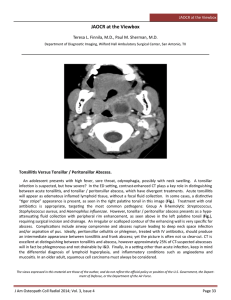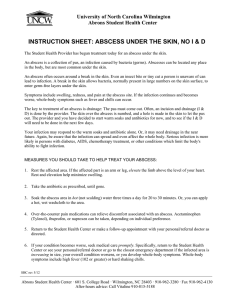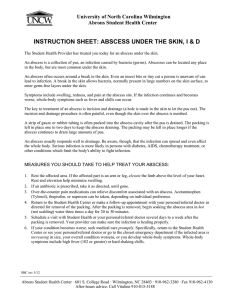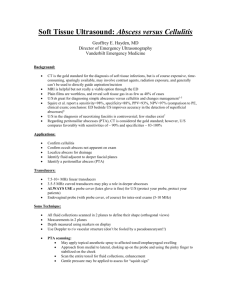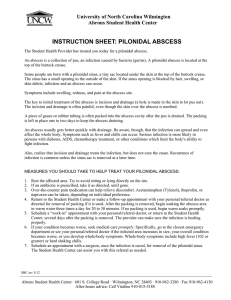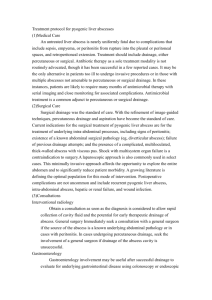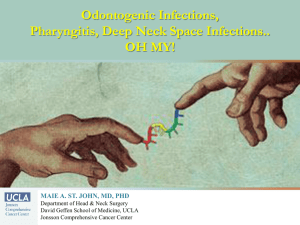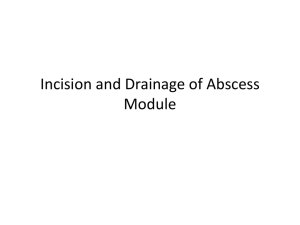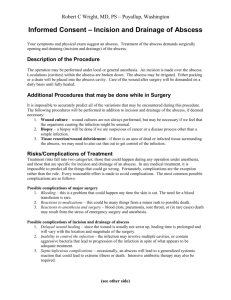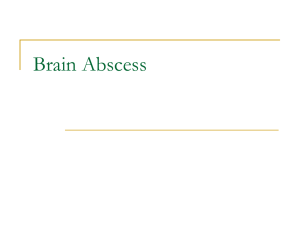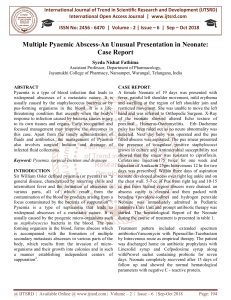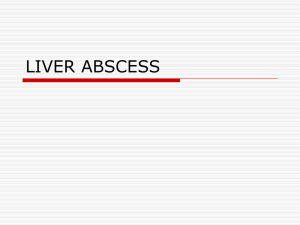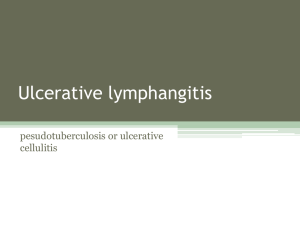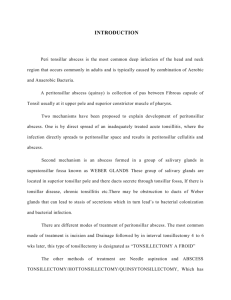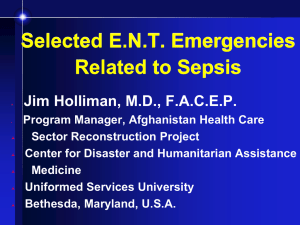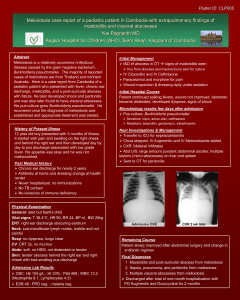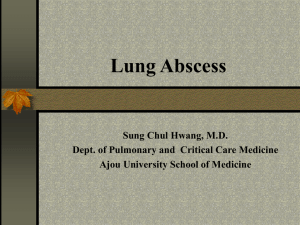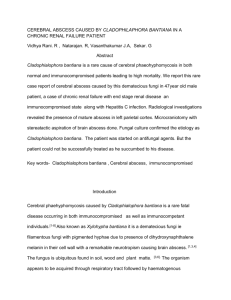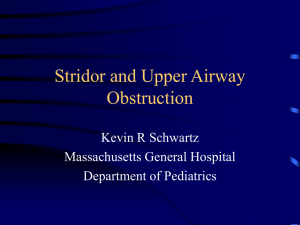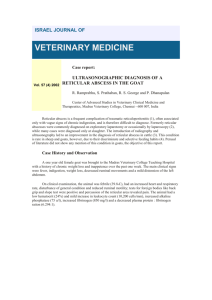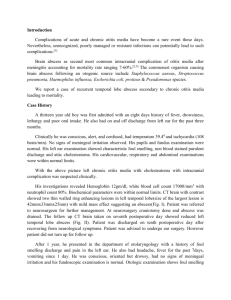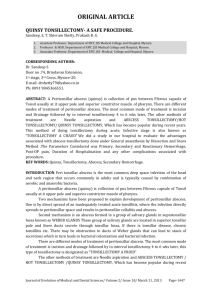General Medical Officer (GMO) Manual: Clinical Section
advertisement
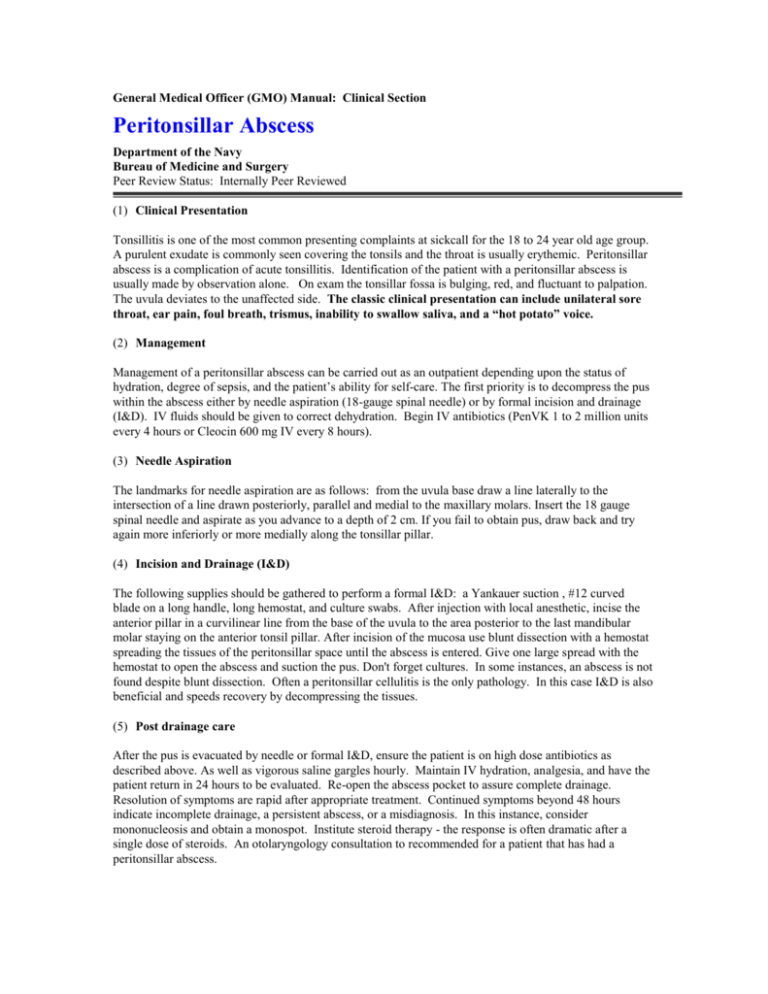
General Medical Officer (GMO) Manual: Clinical Section Peritonsillar Abscess Department of the Navy Bureau of Medicine and Surgery Peer Review Status: Internally Peer Reviewed (1) Clinical Presentation Tonsillitis is one of the most common presenting complaints at sickcall for the 18 to 24 year old age group. A purulent exudate is commonly seen covering the tonsils and the throat is usually erythemic. Peritonsillar abscess is a complication of acute tonsillitis. Identification of the patient with a peritonsillar abscess is usually made by observation alone. On exam the tonsillar fossa is bulging, red, and fluctuant to palpation. The uvula deviates to the unaffected side. The classic clinical presentation can include unilateral sore throat, ear pain, foul breath, trismus, inability to swallow saliva, and a “hot potato” voice. (2) Management Management of a peritonsillar abscess can be carried out as an outpatient depending upon the status of hydration, degree of sepsis, and the patient’s ability for self-care. The first priority is to decompress the pus within the abscess either by needle aspiration (18-gauge spinal needle) or by formal incision and drainage (I&D). IV fluids should be given to correct dehydration. Begin IV antibiotics (PenVK 1 to 2 million units every 4 hours or Cleocin 600 mg IV every 8 hours). (3) Needle Aspiration The landmarks for needle aspiration are as follows: from the uvula base draw a line laterally to the intersection of a line drawn posteriorly, parallel and medial to the maxillary molars. Insert the 18 gauge spinal needle and aspirate as you advance to a depth of 2 cm. If you fail to obtain pus, draw back and try again more inferiorly or more medially along the tonsillar pillar. (4) Incision and Drainage (I&D) The following supplies should be gathered to perform a formal I&D: a Yankauer suction , #12 curved blade on a long handle, long hemostat, and culture swabs. After injection with local anesthetic, incise the anterior pillar in a curvilinear line from the base of the uvula to the area posterior to the last mandibular molar staying on the anterior tonsil pillar. After incision of the mucosa use blunt dissection with a hemostat spreading the tissues of the peritonsillar space until the abscess is entered. Give one large spread with the hemostat to open the abscess and suction the pus. Don't forget cultures. In some instances, an abscess is not found despite blunt dissection. Often a peritonsillar cellulitis is the only pathology. In this case I&D is also beneficial and speeds recovery by decompressing the tissues. (5) Post drainage care After the pus is evacuated by needle or formal I&D, ensure the patient is on high dose antibiotics as described above. As well as vigorous saline gargles hourly. Maintain IV hydration, analgesia, and have the patient return in 24 hours to be evaluated. Re-open the abscess pocket to assure complete drainage. Resolution of symptoms are rapid after appropriate treatment. Continued symptoms beyond 48 hours indicate incomplete drainage, a persistent abscess, or a misdiagnosis. In this instance, consider mononucleosis and obtain a monospot. Institute steroid therapy - the response is often dramatic after a single dose of steroids. An otolaryngology consultation to recommended for a patient that has had a peritonsillar abscess. Reference (a) DeWeese and Saunders Textbook of Otolaryngology. Prepared by LCDR David A. Bianchi, MC, USN, Department of Otolaryngology, National Naval Medical Center, Bethesda, MD. Reviewed by CAPT David H. Thompson, MC, USN, Department of Otolaryngology, National Naval Medical Center, Bethesda, MD. (1998).
